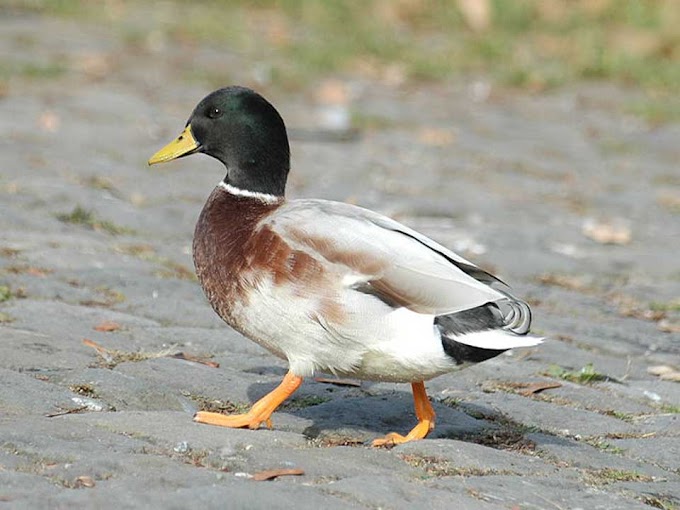Eclectus
Parrot is innate to the Solomon Islands, Sumba, New Guinea, and adjacent
islands, northeastern Australia, and the Maluku Islands. Eclectus Parrot is uncommon
in the parrot family for its great sexual dimorphism of colors of the fluff.
The male Eclectus Parrots have generally bright-green plumage whereas the
females are typically bright-red and purple or blue plumage. The great inhabitants
of this parrot breed remain, and they are occasionally considered as pests because
of eating fruit-off trees. Some inhabitants constrained to comparatively small
islands are comparably uncommon.
Size
The normal size of a sturdy short-tailed Eclectus Parrot is about 35 cm (14 inches)
in length.
Lifespan
The normal life of Eclectus Parrots in captivity is unidentified since these parrots
were not kept in imprisonment in excessive numbers until the 1980s. Some
sources reflect the life of Eclectus Parrots for around 30 years. The extreme dependably
documented longevity for Eclectus Parrot is 28.5 years, but a life of 40.8
years have also been described.
Appearance and Colors
Eclectus
Parrot is uncommon in the parrot-family for its noticeable light sexual
dimorphism in the colors of plumage. The male Eclectus Parrots are commonly
bright-green with a yellow-tinge on the head. The parrot has blue primaries, red-flanks,
and underwing coverts. The tail is bordered with a thin band of creamy-yellow
and dark-grey framed with creamy-yellow underparts. The grand Eclectus female
is generally bright-red with a blacker shade on the back and the wings. The
tail is bordered with yellowish-orange color above and is extra orange tipped
with yellow lower parts. The bill of a mature female is black. The adults have
yellow-to-orange irises and adolescents have dark-brown to black irises. The
upper jaw of both male and female adolescents are brown at the base fading to
yellow near the sharp edges and the tip.
Eclectus Parrot Diet and Feeding
In the
wild, the diet of Eclectus Parrot contains mostly fruits, wild-figs, green nuts,
flower and leaf buds, and some seeds. In imprisonment, Eclectus Parrots eat various
fruits comprising mangos, figs, guavas, bananas, melons, stone fruits, grapes,
citrus fruits, pears, apples, pomegranate, and papaya. The Eclectus Parrot has
a remarkably long digestive tract, so bears a high-fiber food. In imprisonment,
the Eclectus parrot gets advantage from various fresh fruits and vegetables, verdant
plants, for example, endive and dandelion, and a range of seeds, comprising spray
millet, and limited nuts, for example, shelled almonds and walnuts.
Breeding
In
its normal habitation, the Eclectus Parrots make their nests in the hollows and
developing forest trees. Appropriate hollows are at a premium and the female strongly
protects her selected nesting-site from other females. Males may travel up to
20 kilometers to feed and up to 5 male parrots will routinely deliver food for
each female, each opposing with others for her loves and right to father her
young.
Dissimilar
to other parrot breeds, Eclectus Parrots are polygynandrous. The females may
mate with various males, and the males may travel from one nesting site to the
other to mate with several females. This distinctive breeding policy may elucidate
the distinct sexual dimorphism of the Eclectus Parrots, as the female must continue
noticeable at the entry to the nest hole, however well-hidden when in depths of
the nest, for the red color hides her completely at night.
The
females lay two white 1.57 inches x 1.22 inches (40.0 mm x 31.0 mm) eggs which they
hatch after 28 to 30 days, and the young grown-up after eleven (11) weeks. Even
though Eclectus Parrots may reach sexual maturity earlier or later, they generally
reach it between two to three years.
Aviculture
Eclectus
Parrots are the most famous parrots retained in imprisonment. Dissimilar to
various other parrot breeds, they are comparatively easy to breed however
difficult to hand-feed. Eclectus in detention needs vegetables high in
beta-carotene, for example lightly cooked sweet potato, fresh broccoli clumps,
and fresh corn on the cob. Fresh greens, for example, endive or commercial
dandelion are most essential in providing calcium and other nutrients. Parrots
are incapable of abridgment the lactose in milk. Spray millet is one of the
seed substances they like, however, the diet of Eclectus Parrots should normally
comprise much less seed than other breeds.
Eclectus
Parrots are usually peaceful birds in detention, showing a pensive nature when
faced with novel items or circumstances, which may give rise to the wrong the impression that the breed is 'dull-witted'. The Eclectus can also display a
more neophobic nature than other breeds of companion parrots.
 |
| Female Eclectus Parrot |
















0 Comments